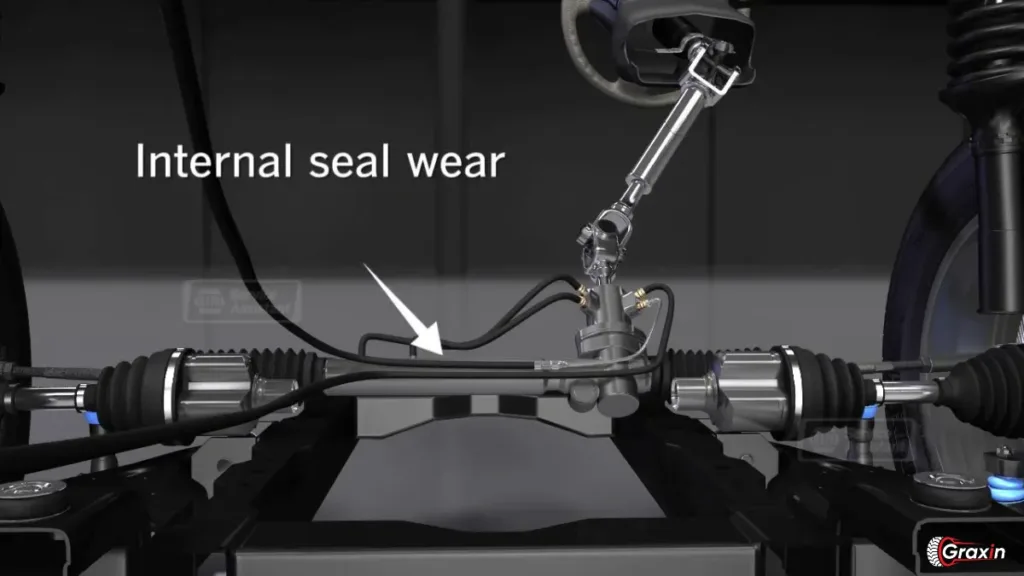You grip that steering wheel and feel like you are fighting a tug-of-war with your car in order to make that turn, right? A stiff steering wheel isn’t just an annoying quirk; it can be an omen of greater problems lurking underneath that hood. So, why does it happen, and more importantly, how do you fix it? Well, let’s break it down, one spin of the wheel at a time!
Why Steering Wheel Stiffness Is a Big Deal
In an ideal world, your car’s steering should respond easily to the slightest touch. Everything is smooth when things are working as they ought to be. You can maneuver yourself smoothly and quickly go around turns or make just that precise adjustment while going around curves. However, things aren’t always so smooth and easy when the turning of the steering wheel becomes difficult-it not only means a good workout for your arms, but some serious trouble might be in store for your car’s safety and performance.
Ignoring the problems in the steering is not at all a comfort issue, but an issue of control. A stiff steering that doesn’t turn quickly enough can be opposite to quick reactions and even worse might make it next to impossible to maneuver suddenly. In short, it’s not something to brush off!
The Usual Suspects: Common Causes of a Stiff Steering Wheel

There are several reasons why your steering wheel may become hard to turn. Some are quick fixes, while others might require more professional help. Let’s explore the most common culprits:
Low Power Steering Fluid
This is probably the major cause of why your steering wheel feels like it is stuck in mud. The power steering system applies hydraulic fluid that enables you to make a steering using minimal effort, especially when turning. When this fluid runs low, the system cannot perform accordingly, and it turns stiff when you are turning the steering wheel.
How to Fix It:
- Check the power steering fluid reservoir. If the fluid level is below the recommended line, top it off.
- Make sure you’re using the correct type of power steering fluid for your car, as specified in the owner’s manual.
- If you notice the fluid level drops quickly after refilling, you might have a leak in the system that needs immediate attention.
Power Steering Pump Failure
If the power steering pump is on its last legs or failing, you will be able to feel this effect in the steering wheel. The pump runs all around the system and circulates the fluid; if it is on its last legs, you most probably will face stiffness in the turns.
How to Fix It:
- Listen for a whining noise when turning the wheel that’s a classic sign of a failing pump.
- A mechanic can test the pump’s pressure output and replace it if necessary.
Worn Out or Loose Steering Belt
In the power steering system, a belt is used to drive the pump. This belt can wear out, become loose, or even snap over time. If this belt is not working correctly then the pump cannot generate any hydraulic pressure to assist further in making the turn and there is stiffness.
How to Fix It:
- Inspect the steering belt for signs of wear, cracks, or looseness.
- If it looks worn, it’s time for a replacement. A mechanic can easily handle this task.
Damaged Steering Rack
The steering rack serves a car to link its wheels to its steering wheel. Sometimes, components of the rack wear out according to how you travel on broken roads. The hard turning, steering wheel may be easily when the car starts up but it can loosen up as it gets warm.
How to Fix It:
- If the rack is damaged or leaking, it may need to be repaired or replaced.
- Regularly maintaining your steering system can help prevent steering rack issues from cropping up.
Tire Issues
Sometimes the problem is neither under the hood nor anywhere in the bodywork-it’s right there on the road. Underinflated or mismatched tires can increase the resistance you feel when turning the wheel. If your tires aren’t rolling smoothly, they’re fighting against your attempts to steer.
How to Fix It:
- Check your tire pressure. Underinflated tires can make steering more difficult, so ensure they’re inflated to the manufacturer’s recommended PSI.
- If the tires are mismatched or unevenly worn, it might be time for a tire rotation or replacement.
Steering Column Issues
The steering column is the shaft that connects the steering wheel to the rest of the system. If there’s an issue in the column, such as damaged bearings or blockages, turning the wheel can become more difficult.
How to Fix It:
- This issue often requires disassembling the steering column to diagnose. A professional mechanic can check for internal damage or obstructions and repair it as needed.
Contaminated Power Steering Fluid
Just like motor oil, power steering fluid becomes contaminated with time. Dirt, debris, and even moisture can seep into the system and dilute the power steering fluid’s effectiveness in its job. When the fluid becomes old or dirty, it is no longer able to produce hydraulic pressure that would create smooth steering.
How to Fix It:
- Have your power steering fluid flushed and replaced according to your vehicle’s maintenance schedule.
- If you notice a burning smell or the fluid looks dark and murky, it’s probably time for a flush.
Suspension Problems
Your car’s suspension also works in tandem with the steering to make your turns smooth and in control. If any of its suspended parts, including ball joints, shocks, or struts, are worn out or damaged, it may make your car’s steering feel heavy and difficult.
How to Fix It:
- A mechanic can inspect the suspension system for worn or damaged components and replace them if necessary.
- Regularly maintaining your suspension can help prevent this issue from occurring.
What Happens If You Ignore the Problem?

With most cars, though you can continue driving, so car repairs come pretty tempting. You’ll actually exacerbate things, though, by ignoring this problem: if hydraulic pressure is lost in power steering systems, it is expensive to repair. Worse, you could end up a victim of a dangerous situation wherein you cannot swiftly turn the steering wheel in an emergency.
How to Prevent Steering Wheel Stiffness
Prevention is always better than cure. Here are some tips to keep your steering system in tip-top shape:
- Regularly check power steering fluid levels and top off as needed.
- Inspect the power steering belt periodically for signs of wear or looseness.
- Ensure your tires are properly inflated and aligned.
- Follow the manufacturer’s recommended maintenance schedule, including fluid flushes and replacements.
- Address any unusual noises or vibrations as soon as they arise.
Conclusion
A stiff steering wheel may be annoying, but it could be an indication of something wrong with your car’s steering system. Issues could include low power steering fluid, to worse, worn-out parts. So the sooner you address these problems the better, because, while they may initially only give you headaches, larger problems will soon come rolling in and cost you more. After all, a safe life depends on your steering, so don’t ignore any signs, okay?
FAQs
1. Can I still drive if my steering wheel is hard to turn?
Yes, but it’s not recommended. A stiff steering wheel reduces your ability to make quick turns, which can be dangerous in emergency situations.
2. How much does it cost to fix power steering?
The cost varies depending on the specific issue. A simple fluid top-off might cost just a few dollars, while replacing a pump or rack could run anywhere from $500 to $1,200.
3. What happens if I don’t replace my power steering fluid?
Over time, old fluid can cause parts of the steering system to wear out faster. Dirty fluid can lead to expensive repairs down the line, like replacing the power steering pump or rack.
4. Can low tire pressure make steering harder?
Yes! Underinflated tires can make your steering feel heavy, especially when turning at lower speeds.
5. How often should I check my power steering fluid?
It’s a good idea to check the fluid every time you get an oil change or at least every 30,000 miles. If you notice any changes in steering performance, check it immediately.
Also Read: Low Brake Fluid Symptoms: Signs that you need to know







